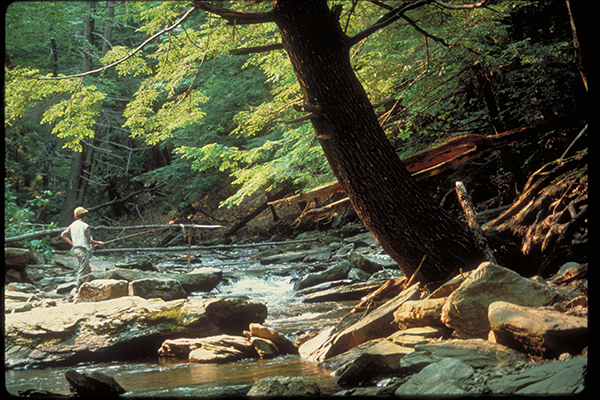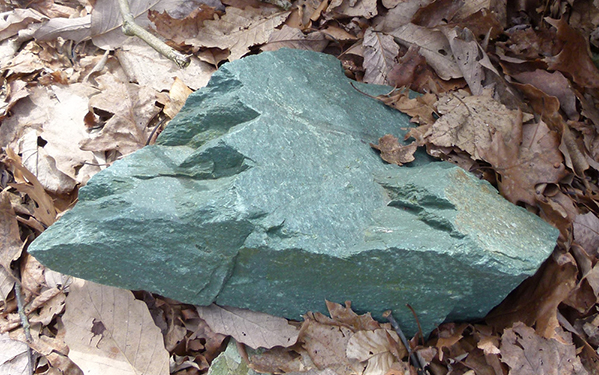The Catoctin Mountain Story
Some things are taken for granted: for example, Catoctin Mountain. The mountain has not always been there, and it will not remain there forever. This is the mountain’s story.
The Catoctin Mountain shares its origins with that of the actual mountain chain of which they are a member: the Appalachian Mountain Chain.
The Time Before Catoctin
In the beginning, there were no mountains where they presently exist. Their birth can be traced back to a period over one billion years ago, when there was only one supercontinent. Today, there are a few areas of the Appalachian Mountains where the billion-year-old remnants of this supercontinent can still be observed, one being near to an area where southwestern Maryland borders Virginia.
Around 750 million years ago, this supercontinent began to pull apart, resulting in the creation of subcontinents (which, incidentally, bore no resemblance to the continents as they exist today). As a result of this continental breakup, the land upon which the Catoctin Mountain is presently located was inundated by the ocean around 500 million years ago, as was most of what would ultimately become the Americas several hundreds of millions of years later.
From some 500 million years ago to about 358 million years ago, oceans covered much of what would later
become land. These oceans spanned several periods of time, including the Cambrian Period (541 million to 485.4 million years ago), the Ordovician Period (485.4 to 443.8 million years ago), the Silurian Period (443.8 to 419.2 million years ago), and the Devonian Period (419.2 to 358 million years ago).
During the course of time in which the oceans predominated, from 541 to 358 million years ago, the seas would witness the rise of the first major life forms during the Cambrian Period. Many of these life forms were so alien that paleontologists of today have not yet been able to determine where they should actually fit within the animal kingdom, due to the fact that they did not survive the Cambrian to be capable of providing any living examples with which to compare them.
On the upside, however, the ancient ancestors of virtually every modern form of life arose and survived, appeared in the Cambrian Period, and the explosion of life on Earth thus commenced with a vengeance.
But the sea floor from which the Catoctin Mountain was to arise was about to come to a cataclysmic event, setting the state for the formation of the Catoctin Mountain.
The continents of the earth, whether they be supercontinents or subcontinents, sit upon portions of solidified crust, which had formed into plates. These plates “drift” about on the surface of the Earth in almost imperceptible slow motion.
As these plates drift about, they might break up into smaller plates or collide with other plates, thereby, becoming adhered to them. This geologic phenomenon is known as continental drift (also known as plate tectonics).
The Continents Collide
Around 335 million years ago, two continental plates—one referred to as the African Plate and the other called the North American Plate—began to move toward each other, like an irresistible force colliding with an immovable object, on a grand scale.
The collision of the two continental plates was so violent that not only did their convergence form a new continent, which geologists have dubbed “Pangaea,” but as the North American Plate buckled from being rammed by the African Plate, the Appalachian Mountains (Catoctin Mountain included) were created.
Geologists have been able to identify three supercontinents that have existed over time on the Earth, according to Live Science, Future USA Inc.
The oldest was Columbia (also called Nuna), which existed from around 1.7 billion years ago to 1.45 billion years ago, during a period of time referred to as the Precambrian Period. A second supercontinent, called Rodinia, existed from a billion years ago to about 700 million years ago, also during the Precambrian.
Pangaea became the third supercontinent and, to date, the last. But the Earth’s plates are still in motion, and someday in the future, there could be a fourth.
The Appalachian Mountains, along with the Catoctin Mountain, are mere remnants of the Appalachian Mountains of 300 million years ago. As the collision subsided, the Appalachian Mountains were as high as the modern-day Himalayas, and the entire mountain chain ranged from Newfoundland to Alabama.
In Alabama, the Appalachians (on a section of the North American plate that had apparently slumped) were subsequently submerged beneath, and buried by the sediments that were deposited by oceans that covered much of the state, some 145 to 40 million years ago.
In addition to mountain building, the collision also transformed rocks that had lain beneath the surface before the continents collided, which were altered into new forms of rock.
The rock layers that had formed from the sediments that had been deposited by the overlying oceans before the great collision were comprised mostly of shale (which had formed from mud) and sandstone (which had formed from sand). Among them were layers of lava (deposited by active volcanoes).
The force of the collision was such that even the crystalline nature of these basic rocks was altered, resulting in shale being converted into phyllite and meta-schist, sandstone being converted into quartzite, and lava being converted into metabasalt. Other basic rocks had also undergone extreme alteration, according to the National Park Service.
Catoctin Mountain Today
Catoctin Mountain as it exists today represents a mere remnant of the mountain it once was. So much of the former Catoctin Mountain has been eroded over the millions of years since its formation, that much of the soil of the fields to the sand at the beaches in Maryland originated as rocks in the primordial mountain.
Even the dinosaurs of Maryland foraged and hunted on land that was generated by the once-commanding heights on the Appalachian Mountains; while, today, farmers can plow and beachgoers can build sandcastles out of the material generated by a dying mountain.
For those interested in collecting remnants of ancient Pangaea still preserved in Catoctin Mountain, restrict your quest to private land (with permission), public roadway roadcuts (where there are safe pull-offs to accommodate a vehicle), and quarries (with permission). However, stay away from federal and/or state lands.
Recommended equipment should include goggles (if one doesn’t already wear glasses), heavy-lined work gloves, a crack hammer (also called a hand sledge), and/or a rock pick, and a variety of cold steel chisels, as well as newspapers and a knapsack for containing specimens. It’s also advisable to label finds as to where they were specifically collected.
For additional reading, the following is suggested: The Maryland Department of Natural Resources’ website article, Maryland Rocks: Amateur mineral hunters find treasure, and the howtofindrocks.com website.
Someday, there will be no Appalachian Mountains…unless or until the continents collide once again.

Fisherman tries his luck in a Catoctin Mountain stream.

Rock specimen: Catoctin Mountain metabasalt, which had been transformed from basalt (hardened lava) as the result of the impact of the continent.

